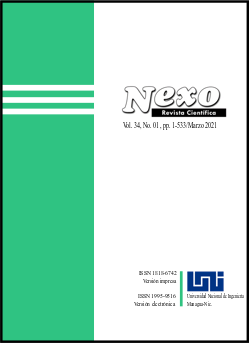Modelo lógico de control de objetos móviles
DOI:
https://doi.org/10.5377/nexo.v34i01.11327Palabras clave:
Situación de información, Modelo lógico, Control moderado, Modelo topológicoResumen
Aquí se describe el modelo lógico usado como un medio de control moderado de objetos móviles. Se considera como base el modelo de la situación lógica espacial sin incertidumbre, o sea, según el principio del tercero excluido. A pesar de ello, se derivan las reglas de tráfico a traves de un enfoque aplicado en matemáticas estructurales y lógica. El enfoque consiste en la finitud de variantes de control y analizar todos los escenarios potenciales del tráfico. El objeto diseñable considerado aquí es el modelo lógico de la situación. El enfoque estructural consiste en considerar el modelo de una estación ferrocarril típica usado como un ejemplo para analizar el tráfico. Se usa el modelo lógico de la situación como una condición para tráfico potencial. Se describe este modelo a través de lógica matemática con la ayuda de variables y reglas lógicas. En este caso el sistema de control hace uso de versiones permitidas de diseños lógicos. Se basa el control en la viabilidad del tráfico. Se usa el modelo de la situación lógica espacial sin incertidumbre como base para desarrollar el sistema de reglas de control. Aquí también se analizan los tipos del tráfico complementarios.
Descargas
1219
Descargas
Publicado
Cómo citar
Número
Sección
Licencia
Los autores que publican en Nexo Revista Científica están de acuerdo con los siguientes términos:
- Los autores conservan los derechos de autor y conceden a la revista el derecho de la primera publicación bajo la licencia Creative Commons Attribution License, que permite a otros compartir el trabajo con un reconocimiento a la autoría de la obra y a la publicación inicial en Nexo Revista Científica.
- Los autores pueden establecer por separado acuerdos adicionales para la distribución no exclusiva de la versión de la obra publicada en la revista (por ejemplo, en un repositorio institucional o en un libro) con el reconocimiento de su publicación inicial en Nexo Revista Científica.
- Se permite y se anima a los autores a difundir sus trabajos electrónicamente (por ejemplo, en repositorios institucionales o en su propio sitio web) antes y durante el proceso de envío, ya que puede dar lugar a intercambios productivos, así como a una citación más temprana y mayor de los trabajos publicados.










